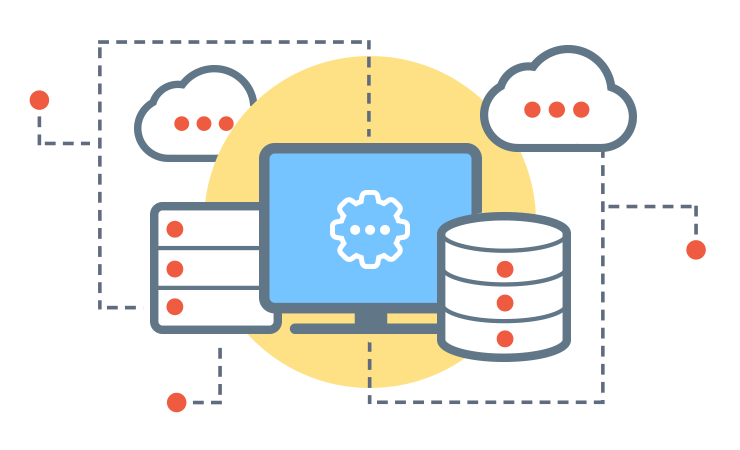Better Supplier Performance Evaluations = Better Procurement Intelligence
Q2 comes to an end, and your CPO looks in your direction.
What supplier has performed best in Category X, Y & Z? What supplier do we have the highest spend within Category X, Y & Z? Of those suppliers that have the highest spend level, and are the highest performing, which contains the most business risks from an environmental & social perspective?
Sure, you can try and shuffle through the rows and columns of your Excel Hell, build custom algorithms, and visualize a bar chart. But, within this scenario lies a question you must pose to yourself, and your broader procurement organization. Are you building procurement intelligence & insights that are driving supply chain performance forward, or are you simply reactionary in the way you obtain and utilize your supplier data at hand?
The interesting thing about asking the question ‘Who is your best supplier?’ is that it’s simply a preluding factor in determining ‘Who is your worst supplier?’
The means for obtaining the answer to these two questions should look very similar.
Adopting solutions & frameworks for modern supplier evaluation will automate your ability to create procurement intelligence & data insights, based upon the criteria your organization has aligned upon to evaluate. There are 3 things you need in order to modernize supplier evaluation, and truly gain data-driven buyer insights, and those are as follows:
- Clear KPIs / Supplier Evaluation Criteria (the What)
- Find the right Supplier Data Sources (the Where)
- Build Business Intelligence (the How?)
Take time to take these three steps, and the next time your CPO looks in your direction, you’ll be able to respond more concretely than, ‘I’ll get back to you on that’.
Aligning on Performance Criteria
About 65% of innovations are sourced through external suppliers and partners (ISM). This makes supplier and partner contributions to a business’s bottom line very important.
“Having a formalized system in place to track and evaluate supplier and vendor performance is essential to the smooth operation and profitability of your company” (Brown 2010).
In order to best track and evaluate suppliers’ performance, your team needs to align on criteria, in which suppliers will be continuously evaluated upon.
So, where to start?
A first step to developing supplier performance criteria is to ensure that you’re taking a holistic approach to performance evaluation. This means you need to take into account KPIs that will cover various stakeholder disciplines. You can’t solely be concerned with evaluating performance criteria that will deepen sourcing & procurement insights into supplier performance. You should use this KPI building exercise as an opportunity to align common goals within the broader business organization; taking into account the goals/performance indicators of sustainability, quality, risk, supply chain, production, marketing & sales in relation to the broader supplier base.
Finding the right levels of granularity to your evaluation/performance criteria is important. At Kodiak Hub, we aid customers to evaluate supplier performance within six parameters with various sub-parameters that belong to each of those six.
Kodiak Hub’s Key Six Supplier Performance Parameters:
- Supplier Quality Performance
- Supply Chain Performance
- Commercial Performance
- Proactivity
- Supplier Innovation Capacity/Performance
- Sustainability Performance
Under each of these performance areas, you should look to identify sub-parameters for supplier performance. Of course, the more granular of performance evaluation you’d like to do, the more you should be taking into account the supplier group or supplier type (Producer, logistics, IT, Marketing, Agent/Trader, Contractor, etc.). It’s important to evaluate supplier performance in line with that supplier’s relevancy to your organization; pretty much make sure you’re comparing apples to apples, and not oranges to apples.
Finding the Right Data Sources

Now that you’ve built the closets, it’s time to fill them with the right information.
You’ve put in the work to identify key performance indicators to a certain degree of granularity. Now, where will you gather the correct information to know what a suppliers’ performance is in that performance area?
Let’s look at an example:
You’re interested in gauging a few suppliers within a finished goods category on their overall innovation capacity.
In order to best gauge this, you determine that the supplier’s investment in R&D and previous track record of SEI are good indicators of their ability to innovate. Considering these aren’t numerical values, you’re going to need stakeholder feedback. To make sure stakeholder evaluations can be used in future data analysis, you should aim to quantify these qualitative experiences related to supplier innovation capacity; this can be done by weighting multiple-choice questions to receive numerical values.
At the same time, you’re interested in gauging a few suppliers within the same finished goods category on their overall quality performance.
Some sub-parameters of Quality Performance you’d likely gauge are deviance of compliant parts per million, number of complaints, and number of claims. These are all numerical (and quantifiable) values and are likely data points that are already reported by the QC, QA, and SQMs in your ERP solution or another QM solution. These data points should be pulled via API integration and fed directly into the correct area, based upon predefined acceptance criteria for excellent, good, satisfactory, and poor.
To automate evaluations as much as possible, and gather robust supplier performance insights it’s best practice to gather data from various data sources:
Kodiak Hub's Four Key Data Sources:
- Internal Stakeholder Evaluation
- Supplier Stakeholder Feedback
- Existing Business Solutions (example: ERP)
- Third-Party Risk Data Sources (financial risk, sanctions, media monitoring, etc.)
The more triangulation of data you’re able to do, gathering stakeholder feedback data, raw output data, and 3rd party data, the more robust evaluation results you’ll be able to achieve. Not every supplier will be evaluated in the same way, and not every supplier evaluation will require data gathering via APIs, supplier inputs, etc.. But, creating the framework for streamlining data/feedback gathering, and weighting/valuing those data points numerically is crucial after you’ve located the right data sources.
Learn more about The Benefits of Using Supplier Information Management Software.
Building Business Intelligence
Alright, this supplier evaluation train is picking up speed, and heading towards the end station, but we can’t forget to make the most out of the data at hand.
BI (Business Intelligence), Analytic Tooling, or Supplier Scorecarding is essential to ensure you’re making the most of the supplier performance evaluations you’re completing. The ability to cut up a data cake the way you’d like is paramount for unlocking deeper buying insights.
59% of Procurement Leaders say they’re Analytics is the technology area that will have the most impact in the next years.
Source: Deloitte CPO Survey 2019
This is why it’s important to try and quantify as much of the qualitative supplier performance KPIs as possible (see above). But, you already know this. You’re already aware of the importance of data analytics.
59% of CPOs say that Analytics is the technology that will have the most impact within procurement in the next 2 years (Deloitte CPO Survey 2019).
In every function of the organization, we’re in a continuous and frantic hunt for better data-driven decision making. Data is the new oil. Within the data lies the answer to the question, who is your best supplier, who is your worst supplier, which supplier is the most innovative, which suppliers are the most sustainable, which supplier category has the third-highest spend, and so forth and so on. Accessing the truth through data is the end goal.
But, being able to identify your best supplier isn’t nearly as important as identifying the process and solutions — the means — to gain those perpetual buying insights.
Best said by Ralph Waldo Emerson, “It’s not the destination, it’s the journey.”
Take the time to dig around in your traditional framework, identify and implement modern processes and solutions for streamlining your ability to gain a continuous stream of future business intelligence.
The question isn’t really “Do you know your best supplier?”
But, rather, “Do you know your best supplier, tomorrow?”
Check out our article on Supplier Performance Monitoring: Spot Risks Before They Happen.













